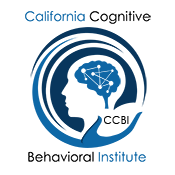Fear and Anger: Similarities, Differences, and Interaction
Dr. Goldstein, Psychology Today, 2022
What Is Fear?
The desire for mental and physical safety is a core motivational force for all of us. Fortunately, we experience certain emotions that assist us in achieving this goal. Specifically, fear and anger arise when we perceive a threat to our safety–whether related to our resources, those we love, or our overall emotional or physical well-being. A key word here is “perceive”: There is a difference between a genuine threat and one triggered by distorted thoughts or a physiological sensitivity for experiencing threat. While making this distinction is not always easy, doing so provides us the pause we need to respond rather than react to these highly charged emotions.
Fear and anger share some similarities but they are also distinctly different from each other. Fear is most often described as an emotional response that pushes us away from what we currently experience or anticipate experiencing, real or imagined. It may involve both an emotional and physical withdrawal. We may be fearful of external forces as well as those that arise from our inner landscape—our thoughts, feelings, and sensations.
In fact, fear of our own emotions is a major contributor to disruptions in our emotional well-being. This is the primary cause of “emotional avoidance” that leads to constriction in emotional flexibility and resilience. Such fear drains our attention and forces us to be guarded–in our thoughts, feelings and behavior–lest we arouse thoughts or feelings that threaten our sense of self.
Fear, like other negative emotions, can trigger our anger. For example, we might feel anger in response to our fear when someone suddenly cuts in front of us while driving down the highway. Similarly, fear of Covid19 can certainly trigger anger toward the virus. Fear of financial pressure can provoke anger with a partner who is perceived as not being frugal.
When excessive, fear can morph into ongoing anxiety that undermines our capacity to be fully present with others and ourselves. Ultimately, it can cripple our capacity to be open to many of life’s experiences.
While fear leads us to feel vulnerable and not in control, anger can be energizing and empowering. As such, it can become the go-to reaction to experiencing fear. Unlike fear, it moves us toward the source of our anger.
The Physiology of Fear and Anger
Both fear and anger trigger our threat system, physiological reactions associated with the “fight-flight or freeze” response. While there is some overlap, these emotions also arouse distinctly different reactions.
This was best identified by an early study in which 43 subjects were stimulated to experience fear and anger, while a variety of physiological reactions were recorded (Ax, 1953). These included (1) heart rate, (2) ballistocardiogram, (3) respiration rate, (4) face temperature, (5) hand temperature, (6) skin conductance, and (7) integrated muscle potential. The scores used were the maximum rise and fall from the preceding resting level.
Of the 14 scores, 7 showed significant discrimination between anger and fear. Diastolic blood pressure rises, heart rate falls, the number of rises in skin conductance and muscle potential were greater for anger than for fear. Additionally, there were greater intercorrelations for anger than for fear, which was interpreted as indicating greater physiological integration during anger.
A more recent study explored physiological reactions in 183 students and employees of a large university (Moons, Eisenberger and Taylor, 2009). Participant’s baseline levels of anger, fear, cortisol, and two pro-inflammatory markers were assessed at the beginning of a stress session. They then completed the Trier Social Stress Task. This consists of presenting a speech and solving arithmetic problems in front of an audience.
Baseline anger and fear were related to greater cortisol and the pro-inflammatory markers. Anger reactions to the stressor were associated with increases in cortisol over time but not the pro-inflammatory cytokines. However, fear reactions were associated with increases in stress-related pro-inflammatory cytokines over time and a decrease in cortisol. The study supported the perspective that these distinct emotional experiences appear to trigger physiological processes that mobilize energy in response to anger and promote withdrawal in response to fear.
Fear and Anger as Motivators
Both fear and anger motivate us, with fear being more powerful in doing so. As such, companies often employ fear in advertising their products. They first instill fear and subsequently identify their product as the best way to alleviate it. Such advertising might state, implicitly or explicitly, that social approval and connection hinges on purchasing a particular brand of product, whether jeans, running shoes or a car.
Politicians may similarly use fear, in both their words and images of their campaign. Rather than highlight specific programs or policy they can offer, they may instead point out a fearful scenario as an outcome for not voting for them. When extreme, promoting fear and anger is a hallmark strategy used by authoritarian leaders to intensify our sense of threat and subsequently gain power. Additionally, targeting selective groups of “others” as being responsible for the threat. Once identified, anger and fear support prejudice toward and dehumanizing them. It is no surprise then, that fear and anger can culminate in hostility and aggression.
Fear, Anger, and Attention
Both fear and anger can hijack and constrict our attention. This reaction is often associated with the “fight, flight, or freeze” mode. Such narrowing of attention is powerfully revealed in both tunnel vision and auditory exclusion, two reactions reported by police officers involved in shootings. During tunnel vision, attention focuses on the target while the peripheral vision becomes a blur. And, while training may help reduce these effects, their arousal is less subject to personal will.
In one study of 40 college students, it was found that anger and fear inhibit associative memory (Adler, 2020). They were shown faces with three emotional expressions: neutral, angry, and fearful. Each face was paired with different objects under them. When assessed for their recall of the objects, the students’ performance was diminished regarding those images including faces expressing fear and anger.
When Fear or Anger Are Appealing
There are times when we may seek to experience fear or anger, even in spite of their discomfort. For example, we may enjoy viewing a scary movie or riding the most exhilarating roller coaster at the amusement park. Fear may be tolerable in both of these situations because we can feel in control when we experience certainty that we will not be harmed.
Additionally, we may seek to engage in activities that offer heightened physical excitement because they are in fact dangerous. These might include skydiving, climbing mountains, or extreme sports.
Similarly, anger may be experienced positively when it feels both physically and emotionally empowering. The term “addicted to anger” describes this tendency. It may be used to create distance in a relationship or to exert control, as in bullying. Or it can be channeled more constructively to further a cause, reflected, for example, by peaceful protest.
Being open to our fear and anger helps us better connect with ourselves. These emotions offer us insight into our sense of safety. Learning to recognize and acknowledge them offers us an opportunity to mindfully choose how to respond to, rather than react to them. Such skills enhance our emotional intelligence. Without such emotional flexibility, we remain subjected to fear and anger–and potentially to those who might benefit from their arousal.
References
Ax, A. (1953) The Physiological differentiation between fear and anger in human. Psychosomatic Medicine, Vol 15 (5), 433-442.
Moons, W., Eisenberger, N., & Taylor, S. (2010). Anger and fear responses to stress have different biological profiles. Brain, Behavior, and Immunity Vol. 24, 215-219.
Adler, M. (2020). The effect of emotion on associative memory: anger versus fear. Oregon Undergraduate Research Journal Vol. 17 (1)

